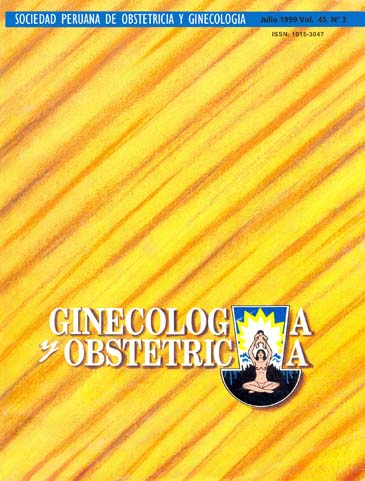NUCHAL TRANSLUCENCY MARKER FETAL CHROMOSOME CHANGES IN THE FIRST QUARTER
DOI:
https://doi.org/10.31403/rpgo.v45i640Abstract
Objective: We evaluated the effectiveness of fetal nuchal translucency thickness measurement in routine transvaginal ultrasound screening at 10-14 gestational weeks as a predictor of Downs syndrome in the fetus. Material and methods: A total of 424 pregnant women including one with a twin pregnancy were scanned in the first trimester of pregnancy using a fixed cutoff point of 3 mm for the nuchal translucency measurement. Among these cases 64 had an amniocentesis for fetal karyotyping, other 5 fetuses miscarried spontaneously and one malformed liveborn had also a chromosome analysis. Results: The 410 cases with nuchal translucency thickness less than 3 mm resulted in 409 normal newborns and one baby trisomy 13. A nuchal translucency of 3 mm or greater was detected in 14 pregnancies with the following results: 3 normal babies, 7 with Downs syndrome, 2 with Turners syndrome and 2 were miscarried spontaneously without chromosome analysis. Conclusion: This study demonstrates that first trimester nuchal translucency combined with maternal age is an effective method of screening for fetal chromosomic abnormalities and can be used in routine clinical practice.Downloads
Download data is not yet available.
Downloads
Published
2015-05-20
How to Cite
Quispe, J., Almandoz, Ángela, & Q. de Michelena, M. (2015). NUCHAL TRANSLUCENCY MARKER FETAL CHROMOSOME CHANGES IN THE FIRST QUARTER. The Peruvian Journal of Gynecology and Obstetrics, 45(3), 183–186. https://doi.org/10.31403/rpgo.v45i640
Issue
Section
Artículos Originales
















